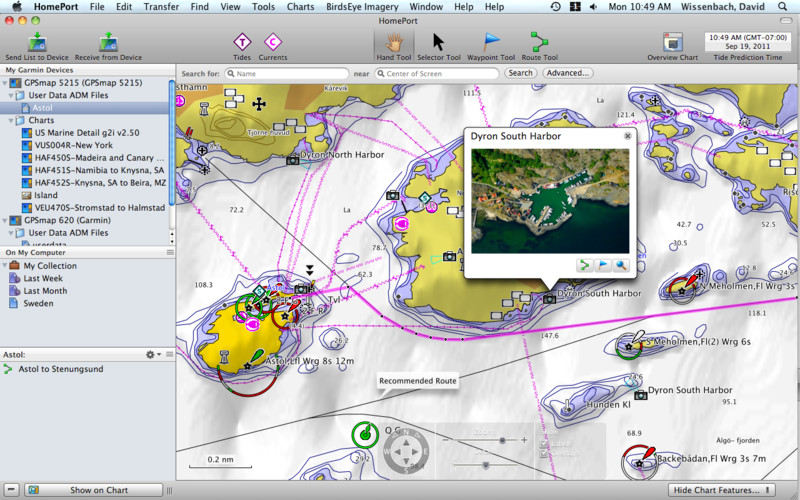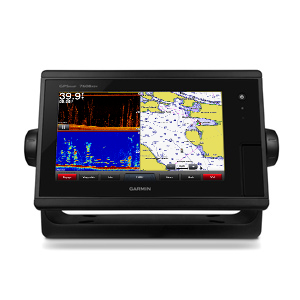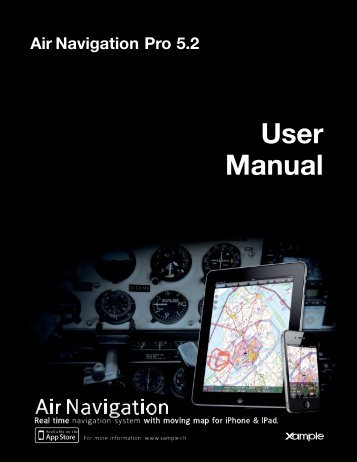

- #WHERE ARE THE AMD FILES STORE FOR GARMIN HOMEPORT PC#
- #WHERE ARE THE AMD FILES STORE FOR GARMIN HOMEPORT PLUS#
- #WHERE ARE THE AMD FILES STORE FOR GARMIN HOMEPORT WINDOWS#
If you look at the first screen you can see the variation in speed/distance/heading from point to point. The recorded depth points apparently missed the split second when the transducer passed over the crib, which makes sense. There are several stone cribs in that area, left over from some industrial use, and I think they’re slowly coming apart and disappearing, which is a challenge for chart makers. It’s pretty obvious from the track points, especially the rapid loss of speed ( -), that it was the “crib”, even though Garmin shows it as sticking above the water. What he hit was just deep enough to catch his outboard lower unit but not his hull, maybe two feet. It’s fairly big for a trailerable boat, but otherwise normal. (Which, incidentally are issues that will come up with data collection schemes like ARGUS.) The big story, though, is how a skipper like Anon might have used Homeport to pre run a trip like this, even route it, while sitting at home or at a down below nav station with a big screen, a mouse, and the time to really check out the chart detail available. But, mind you, those pre-crib points were collected at 25 knots, and there may be ways to get the Garmin to record points even more frequently. Which is pretty darn cool, though there is some discrepancy between the shallowest point marked and the actual location and depth of the crib.

Better even than the NOAA, ENC in my opinion, but I’ll detail that in a future entry.Īs for Homeport, note how it’s able to profile the log’s collected depth soundings, even zoom in on individual points and pinpoint them on the charted track. But the log says different and actually comparing this chart to several others indicates that Garmin may have done the best job of representing the underlying NOAA data for this particular spot. In fact, though he took responsibility in the proper captain fashion, he kinda sorta thought the Garmin had misguided him about the “Obs rep” and the correct side to leave that bouy 68a. After running over the apparently sunken “crib” he’d had to limp the boat back to the ramp with a badly damaged lower unit and hadn’t investigated the track detail.
#WHERE ARE THE AMD FILES STORE FOR GARMIN HOMEPORT PC#
I was with Anon when he first saw this track zoomed in on his plotter and then even better detailed on my big PC screen.

Clicking once on that particular track point got Homeport to put that orange circle mark on the chart spot, clicking twice zoomed into the tragic image below. Methinks it was all that navigational focus at speed that largely accounts for what went wrong at track point #1,867, when Anon was within sight of the launch ramp and running a little bit further up river to burn the gas out his outboard. So Anon drove some 64 nm of complex river (the skinny Sasanoa is famous for its whirlpools!), and his Garmin tracked every bit of it in some detail, as you can see in the bottom middle window. Clicking on Active Log #16 would show the 25 nm he’d run down river before lunching in Bath. At any rate, I’ve clicked on Anon’s last automatically made Active Log (track) and Homeport has zoomed out to show part of a neat trip he took down and back up the Kennebec and Sasanoa Rivers from the launch ramp in Hallowell.

Note that I’ve also opened the 5212 base map from the SD card you can see under Devices (I also have the Vision SD card in the PC, and can switch to that added cartography detail if desired). Thus all the data in the lower left window is his. At upper left on the screen you can see that I’ve opened the user file that we downloaded off his Garmin and that I imported into my Homeport Library. We’ll call him Anon so the Google won’t forever pin this very uncharacteristic mistake to his real name. Click to enlarge the screen above and I’ll explain after the break… But today’s look at some deeper Homeport features gets the benefit of a friend’s embarrassing navigation error. I stowed away some memorable tracks, quickly cleaned up some extraneous waypoints (careful with that track-to-route feature), polished some favorite routes, and then overwrote the user data on the 5212 with a much more useful set.
#WHERE ARE THE AMD FILES STORE FOR GARMIN HOMEPORT PLUS#
I was able to easily copy the 5212’s embedded charts - plus the mess of tracks, routes, and waypoints I put on it last season - and then review/manage all on my home computer.
#WHERE ARE THE AMD FILES STORE FOR GARMIN HOMEPORT WINDOWS#
I can’t imagine why anyone with a Garmin plotter, a Windows PC, and a bit of ability to use both wouldn’t find Garmin Homeport more than worth the $30 charge.


 0 kommentar(er)
0 kommentar(er)
